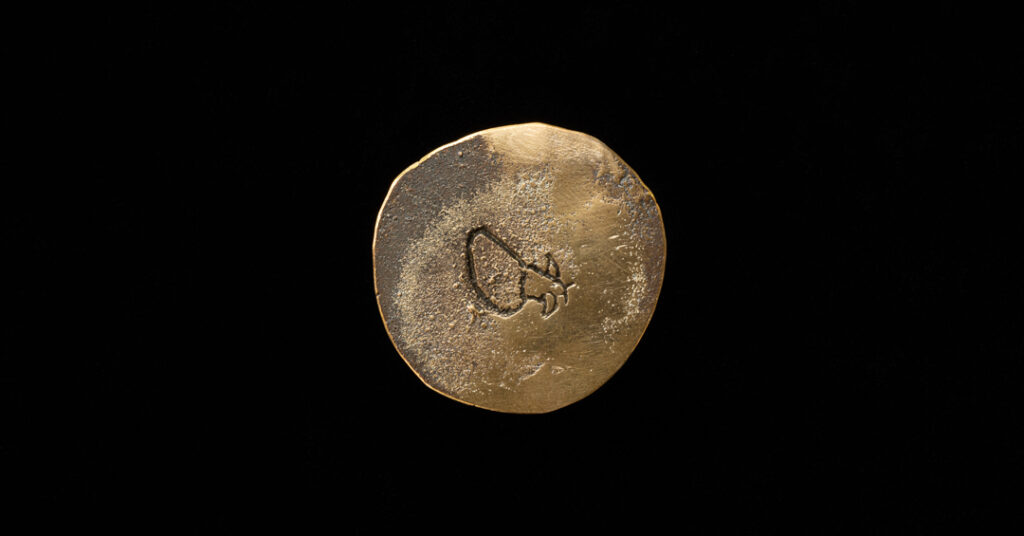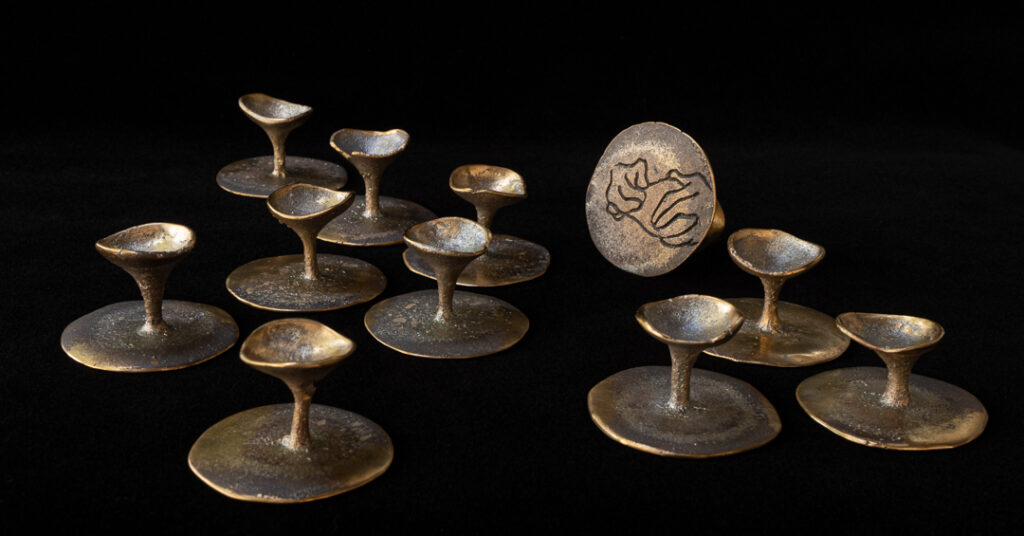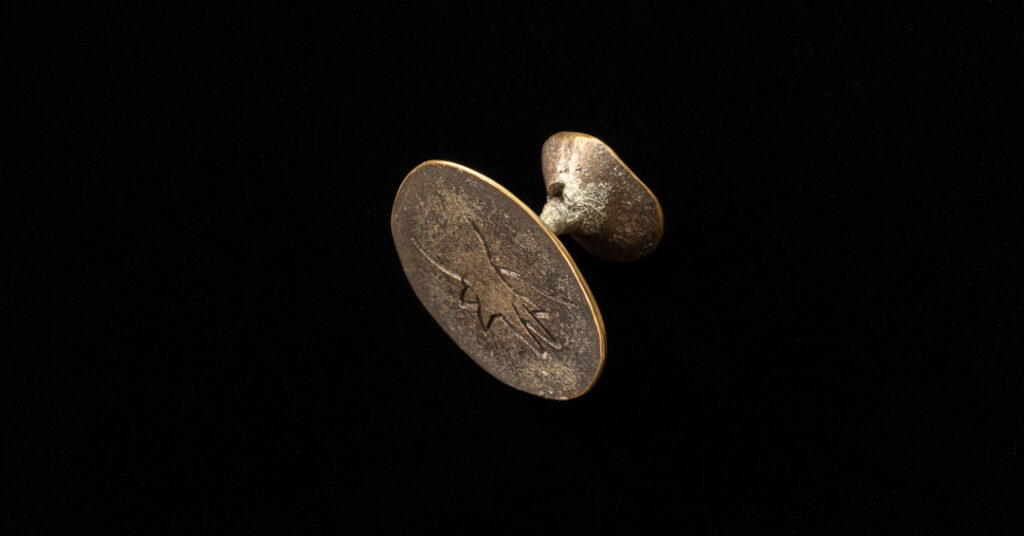Rudee Tancharoen cast a series of rings in Ban PaAo that were augmented by Peeraphat Kittisuwat, evoking the natural spirits that inspired them.
Psychometry, also known as token-object reading, finds its roots in the Greek words ψυχή, psukhē, meaning “spirit, soul,” and μέτρον, metron, meaning “measure.” Some believe that objects possess an energy field, capable of transmitting information about their past.
In this work, Augmented Reality serves as a tool for soul reading, in the absence of extrasensory perception. The rings take on the role of token-objects, acting as vessels for the mushroom-shaped Augmented Reality experience. Like mushrooms, these rings carry the potential to transport the mind, leading you on a journey through the memories of Ban PaAo.
Ban PaAo, a small village nestled in Ubon Ratchathani province in the northeast of Thailand, is home to the ancient art of metal casting, a practice passed down from one generation to the next. The rings are gateways to the village’s soul, allowing you to listen to its stories and witness its history through the augmented reality experience.
This work is a collaboration with Peeraphat Kittisuwat, a multi-talented artist and designer from Bangkok. He creates various animations for concerts, short films, museums, exhibitions, and commercials. His work has been exhibited in Tokyo, Yokohama, Paris, Brussels, and Bangkok.
Pheasant foot

As our group gathered around Grandma Tuan for her silk reeling demonstration, a curious foreigner caught sight of a mysterious object hanging from a pole next to a boiler. He pointed to it and asked what it was. At first, Grandma seemed hesitant to speak about it, but she couldn’t avoid the foreigner’s persistent questioning. “It’s a pheasant foot,” she finally replied.
The foreigner was intrigued and asked what it was used for. Grandma’s response was unexpected. “To protect from ghosts,” she said. The translator quickly relayed the information, and all attention shifted from the cocoon in the pot to the pheasant foot on the pole.
We were curious and asked where the ghosts were and what kind they were.”Ogress,” she said. “They are right here in our village.” With that, she continued reeling her silk, leaving us all with a sense of unease and the image of the pheasant foot firmly implanted in our minds.
Silk moth

The delicate silk moth emerged from its cocoon, a survivor of the boiling process used to extract the valuable thread. Though it had evaded that fate, it’s still too soon to say that it is the lucky one. With its blindness and its wings too small for flight, the moth relied on its scent antennae to navigate the world around it. Its sole purpose now was to mate, and it began to crawl in search of a female partner. But this would be its final task, as the silk moth lacked a mouth and could not eat. Its brief existence would end soon after it fulfilled its biological imperative. This silk moth was an unnatural creation. They were created by humans. Humans who say, nature is cruel.
Si Nuan’s paw
“Si Nuan died in a temple.
Actually, rather than a temple,
it was an almost abandoned zoo in a temple.
The villagers agreed that Si Nuan was old and the previous months were very cold. It was natural that the weak Si Nuan couldn’t survive.
The carcass was laid down and waited for the dissection.
On the scrawny head, beneath the left eye, there was a large cavity almost a wrist size.
Rotten flesh and bone were visible through it.
The fiery teenagers often threw rocks and pricked twigs into the pond, aimed to hit the crocodiles.
Various sizes of stones and twigs scattered around the pound were the evidence. How Si Nuan and the other animals came to live in the temple
was a long story involved with the development of the village.
Everyone has their good reasons.
Those animals in captive were necessary for the children’s education. And the death of Si Nuan was, of course, natural.”
We ask Rudee Tancharoen for some background on this project.
✿How did the idea of this work come about?
In 2021, I was presented with an opportunity to showcase my artwork entitled “Kan Doenthang 2021: Coexistence” at The National Museum Phimai during the Thailand Biennale. The installation consists of a collection of jewellery crafted using the PaAo casting technique. The artwork explores the coexistence of various elements, including objects, individuals, and historical periods spanning from the past to the future.
While attending the event, I had the chance to view other works by several promising young artists, some of which incorporated virtual reality (VR) and augmented reality (AR) technologies. I observed that my artwork heavily emphasized the past but lacked sufficient connections or references to both the present and the future in terms of its appearance. Consequently, I endeavoured to merge the PaAo casting technique with AR technology to visualize the coexistence of past, present, and future, thus sparking the initial concept for this endeavour.
✿ How does it work? Do you need to download a particular app?
Indeed, it is necessary for the audience to download an application. Once the application has been downloaded, the audience must launch it and position the artwork in front of their camera. Upon completing this step, an animated visual with accompanying audio will be displayed on their device.
The augmented reality application used for these rings is Artivive.
Follow @rudee_tancharoen, like RudeeTancharoen and visit www.rudeetancharoen.com.
See also:






